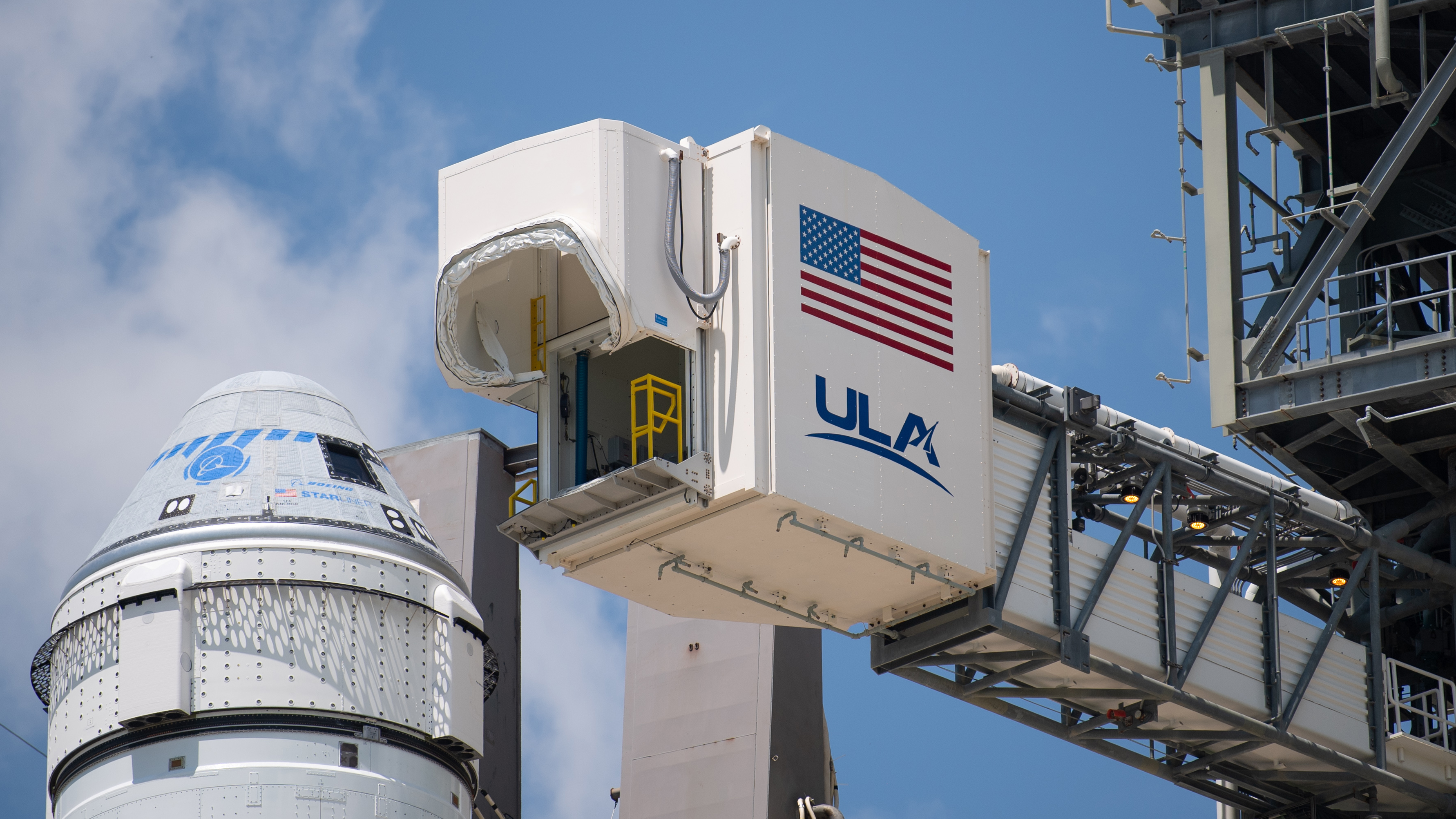Boeing's next Starliner test launch for NASA slips to 2022

Boeing's Starliner astronaut taxi won't get off the ground this year after all.
Starliner was originally supposed to launch Aug. 3 on Orbital Flight Test 2 (OFT-2), a critical uncrewed trial mission to the International Space Station for NASA. But prelaunch tests revealed 13 stuck valves in Starliner's service module, pushing the liftoff back — all the way into next year, it now appears.
"Potential launch windows for OFT-2 continue to be assessed by NASA, Boeing, United Launch Alliance and the Eastern Range," NASA officials wrote in an update on Friday (Oct. 8). "The team currently is working toward opportunities in the first half of 2022 pending hardware readiness, the rocket manifest and space station availability."
In photos: Boeing's Starliner OFT-2 mission in pictures
United Launch Alliance builds Starliner's rocket ride, the powerful Atlas V. The Eastern Range is the U.S. Space Force entity that oversees launches from the East Coast. (OFT-2 will lift off from Cape Canaveral Space Force Station in Florida.)
Boeing has made considerable progress on the valve issue to date, NASA officials said.
"Boeing has identified a most probable cause related to oxidizer and moisture interactions, and although some verification work remains underway, our confidence is high enough that we are commencing corrective and preventive actions," NASA officials wrote in Friday's update. "Additional spacecraft and component testing will be conducted in the coming weeks to further explore contributing factors and necessary system remediation before flight."
Breaking space news, the latest updates on rocket launches, skywatching events and more!
In 2014, NASA's Commercial Crew Program selected Boeing and SpaceX to provide astronaut transportation to and from the space station, awarding both companies multibillion-dollar contracts. SpaceX has already launched two operational missions to the orbiting lab with its Falcon 9 rocket and Crew Dragon capsule and is gearing up for a third liftoff on Oct. 30. The company also launched a crewed test flight to the station called Demo-2 in May 2020.
Starliner has yet to carry astronauts, however, and cannot do so until it aces an uncrewed test flight to the space station.
As its name suggests, OFT-2 will be Boeing's second crack at that crucial mission. On the first try, which launched in December 2019, Starliner suffered multiple glitches, got stranded in the wrong orbit for a meetup with the station and landed after circling Earth solo for three days.
Mike Wall is the author of "Out There" (Grand Central Publishing, 2018; illustrated by Karl Tate), a book about the search for alien life. Follow him on Twitter @michaeldwall. Follow us on Twitter @Spacedotcom or Facebook.

Michael Wall is a Senior Space Writer with Space.com and joined the team in 2010. He primarily covers exoplanets, spaceflight and military space, but has been known to dabble in the space art beat. His book about the search for alien life, "Out There," was published on Nov. 13, 2018. Before becoming a science writer, Michael worked as a herpetologist and wildlife biologist. He has a Ph.D. in evolutionary biology from the University of Sydney, Australia, a bachelor's degree from the University of Arizona, and a graduate certificate in science writing from the University of California, Santa Cruz. To find out what his latest project is, you can follow Michael on Twitter.
